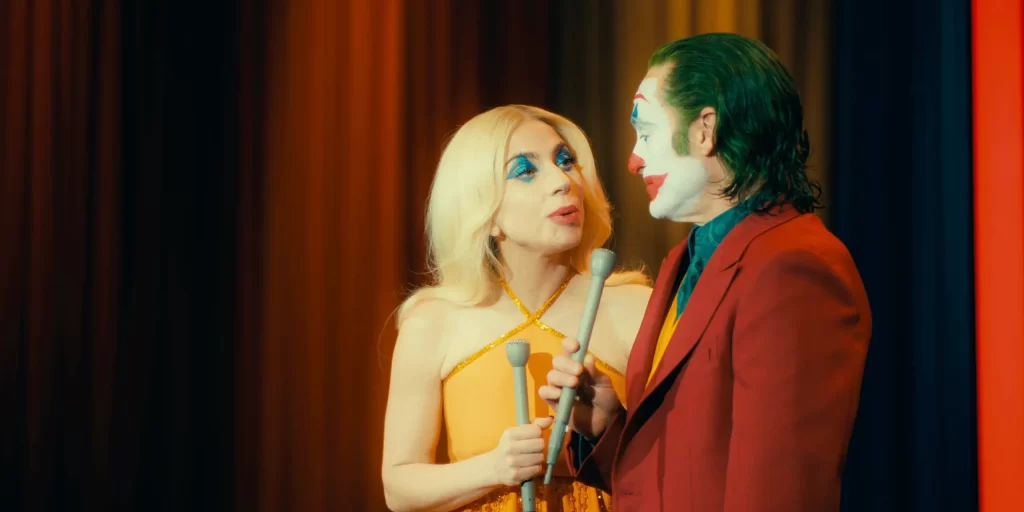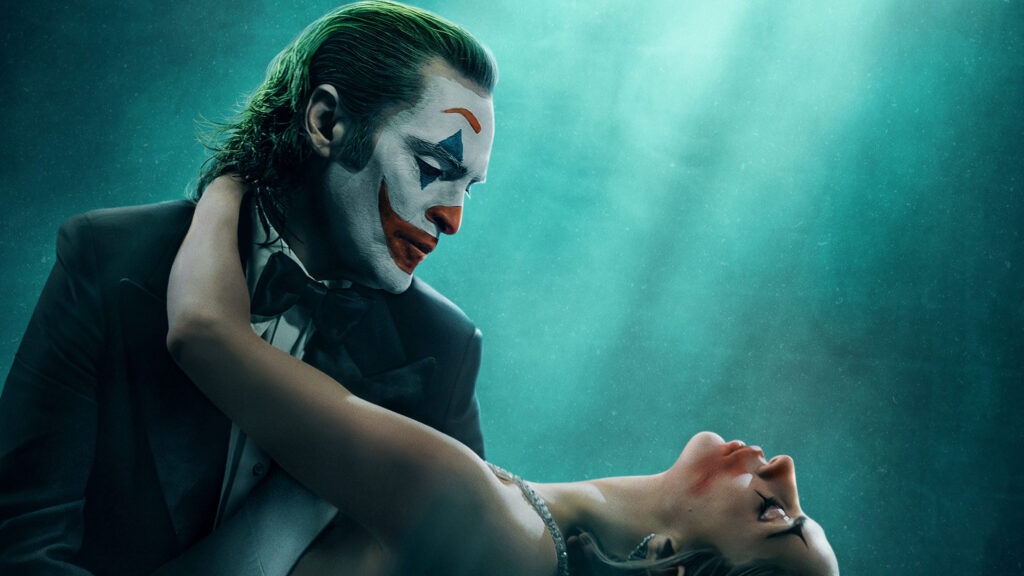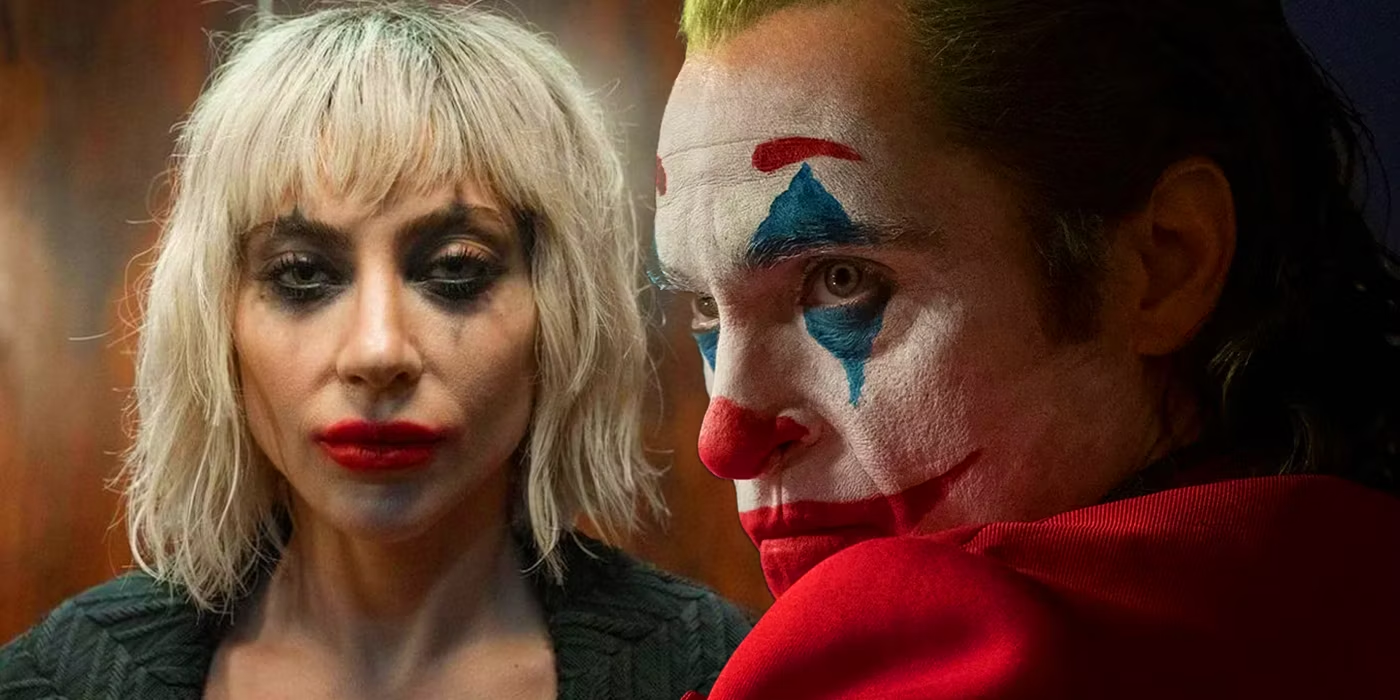Ah, the Joker. He’s back, folks! But this time, he’s ready to trade in his sinister laugh for a few show-stopping numbers. Joker: Folie à Deux, the highly anticipated sequel to Todd Phillips’ 2019 blockbuster, is making waves with its bold new direction—musical numbers! Yes, you read that right. This isn’t just a sequel; it’s a plunge into a cacophony of chaos and melody that promises to be as captivating as it is unsettling. But does it hit all the right notes? Let’s dive in!
Plot Summary: A Chaotic Symphony
Set against the backdrop of a Gotham teetering on the edge of madness, Joker: Folie à Deux follows Arthur Fleck (Joaquin Phoenix) as he navigates the treacherous waters of fame and infamy. This time, he’s joined by the equally twisted Harleen Quinzel, played by the phenomenal Lady Gaga. The film opens with a whimsical, Looney Tunes-inspired animated sequence (yes, you read that correctly), setting a surreal tone as we explore their toxic love story. Expect courtroom drama, prison riots, and a variety-show finale that’s less The Ed Sullivan Show and more American Horror Story—all while the characters break into song!
Technical Aspects: A Feast for the Senses
Visually, Joker: Folie à Deux is a treat that marries the grotesque with the gorgeous. Phillips, who has an eye for the unsettling, employs a color palette that oscillates between dark, brooding tones and vibrant bursts that mimic the emotional highs and lows of the characters. The cinematography, courtesy of Lawrence Sher, utilizes tight close-ups that capture every twitch and twinge of Fleck’s descent into madness.
The sound design is equally impressive. Expect a haunting score peppered with musical numbers that might have you questioning your sanity—and maybe even dancing in your seat. The blend of psychological thrills with a musical backdrop creates an atmosphere that feels both familiar and refreshingly new.

Acting and Characters: A Duet of Madness
If you thought Joaquin Phoenix’s portrayal of Arthur Fleck in the first installment was chilling, wait until you see him belt out a tune. His transformation into a Broadway-ready Joker is nothing short of mesmerizing. Phoenix delivers a performance layered with vulnerability and volatility, showcasing an Arthur who’s more unhinged yet oddly charismatic than ever.
And then there’s Lady Gaga as Harleen Quinzel. With her fierce presence and vocal prowess, she embodies a character who is both a partner in crime and a mirror to Fleck’s madness. Their chemistry crackles on screen, especially in moments where love and lunacy intertwine. The musical duets between Phoenix and Gaga elevate the film to a level that could make even Sweeney Todd proud.

Direction and Screenplay: A Musical Vision
Todd Phillips returns to the director’s chair, and he’s clearly not playing it safe this time. His decision to pivot from a grim psychological thriller to a musical is bold, and it pays off in unexpected ways. The screenplay, co-written with Scott Silver, deftly balances dark humor with poignant moments of reflection, creating a narrative that feels both entertaining and thought-provoking.
Phillips’ directorial style is evident in the way he navigates the chaotic interplay of music and madness, pushing boundaries while still paying homage to the source material. The film’s pacing, especially during musical interludes, is expertly handled, transitioning seamlessly from high-energy numbers to somber, introspective moments.
Themes and Message: More than Just a Song
At its core, Joker: Folie à Deux explores themes of identity, love, and the thin line between sanity and insanity. The musical format allows for an exploration of emotions rarely captured in traditional narratives. Through song, we see the characters’ inner turmoil laid bare, revealing the complexities of their relationship and their struggles against societal norms.
Additionally, the film critiques celebrity culture and the obsession with fame, asking the viewer to consider the cost of notoriety. It’s a chaotic symphony of messages that resonates on multiple levels—just don’t forget to bring your dancing shoes!
Comparison: A New Tune in a Familiar Key
Comparing Joker: Folie à Deux with its predecessor is inevitable. While the original film was a dark, brooding character study, the sequel injects a dose of surrealism and musicality that’s reminiscent of Bob Fosse’s *All That Jazz*. The tonal shift may surprise some fans, but it’s a welcome evolution that expands the universe of the Joker while maintaining its foundational darkness.
In terms of style, think of it as a twisted love child of *La La Land* and *A Clockwork Orange*. It’s a mash-up that shouldn’t work, yet somehow manages to create a unique cinematic experience that will leave audiences buzzing.
Pros and Cons: The Good, The Bad, and The Beautifully Bizarre
- Stellar Performances: Phoenix and Gaga deliver outstanding performances that are both chilling and captivating.
- Innovative Direction: Phillips takes risks that pay off, creating a fresh take on the superhero genre.
- Aesthetic Brilliance: The cinematography and sound design elevate the film, creating a hauntingly beautiful atmosphere.
Musical Format May Not Be for Everyone: The shift to musical numbers could alienate some fans of the original’s darker tone.
Complexity Might Overwhelm: With so many themes at play, some viewers may find it hard to keep up.
Conclusion and Rating: A Madcap Marvel
Joker: Folie à Deux is a wild ride that defies expectations and genre conventions. It’s a film that challenges viewers to rethink what a superhero story can be—complete with singing, dancing, and a hefty dose of insanity. If you’re ready to explore the dark, twisted world of Gotham through a musical lens, then this film is a must-see.
Rating: ★★★★☆ (4/5)
So, grab your popcorn, prepare for some earworms, and get ready to witness the madness unfold—because this is one musical you won’t want to miss!




Leave a Reply